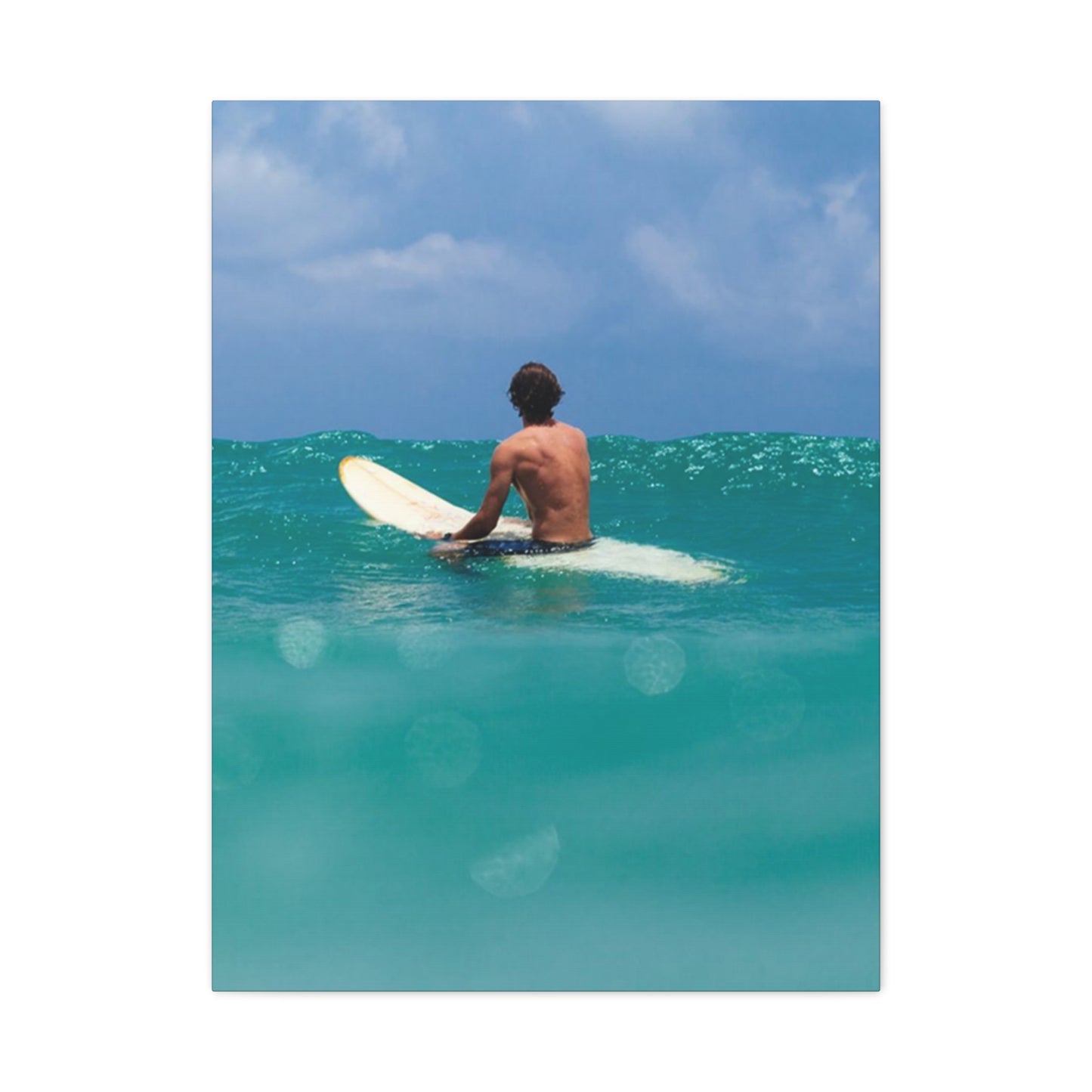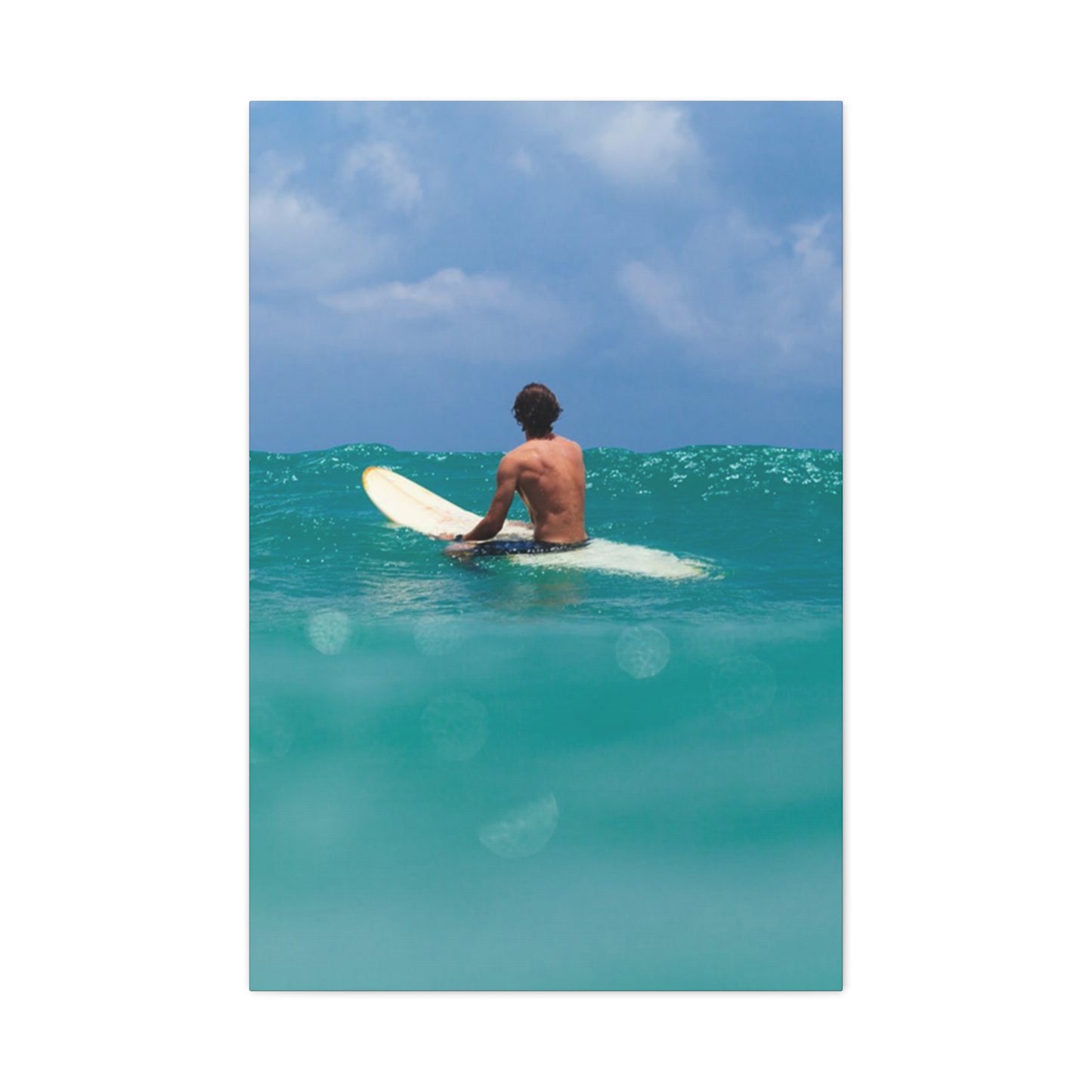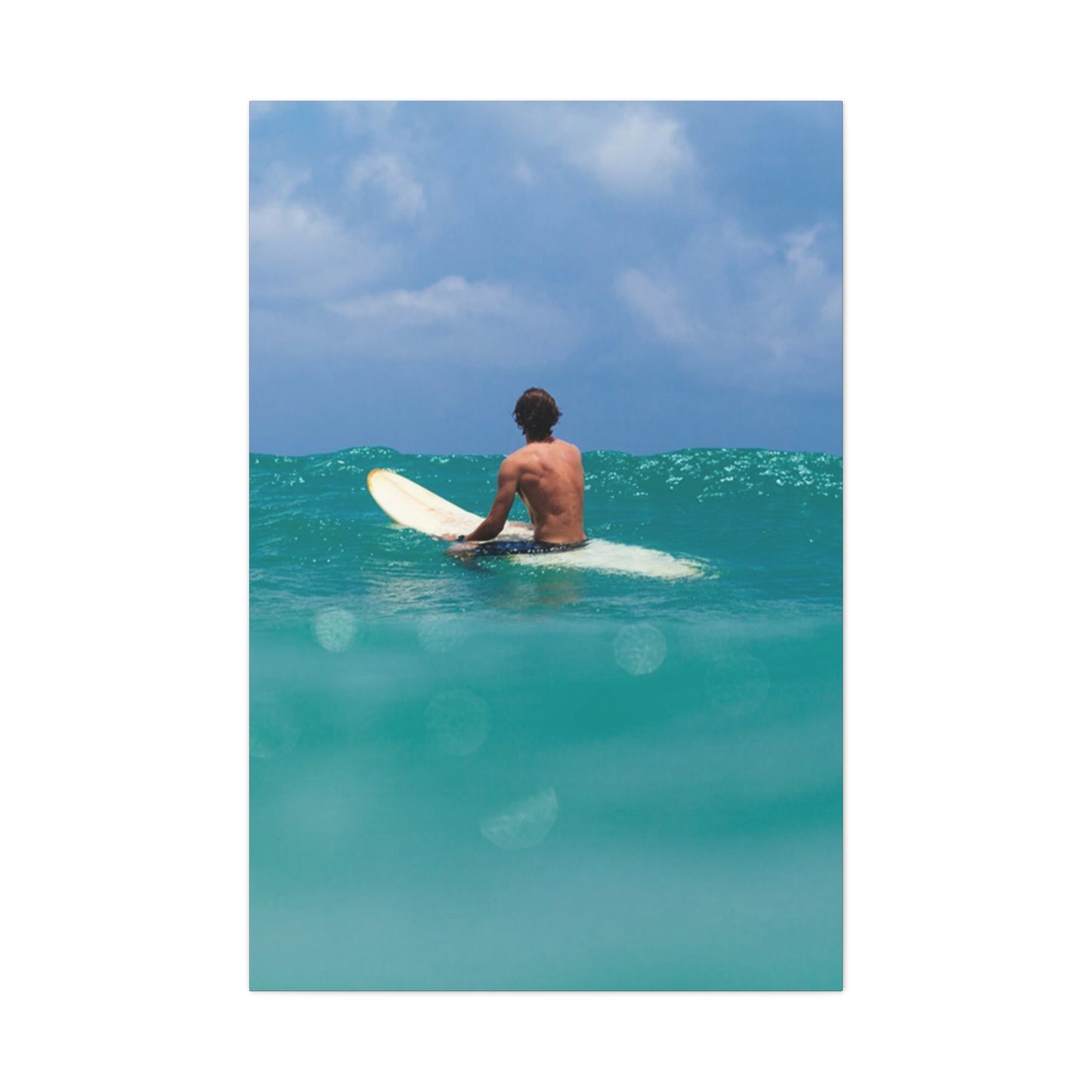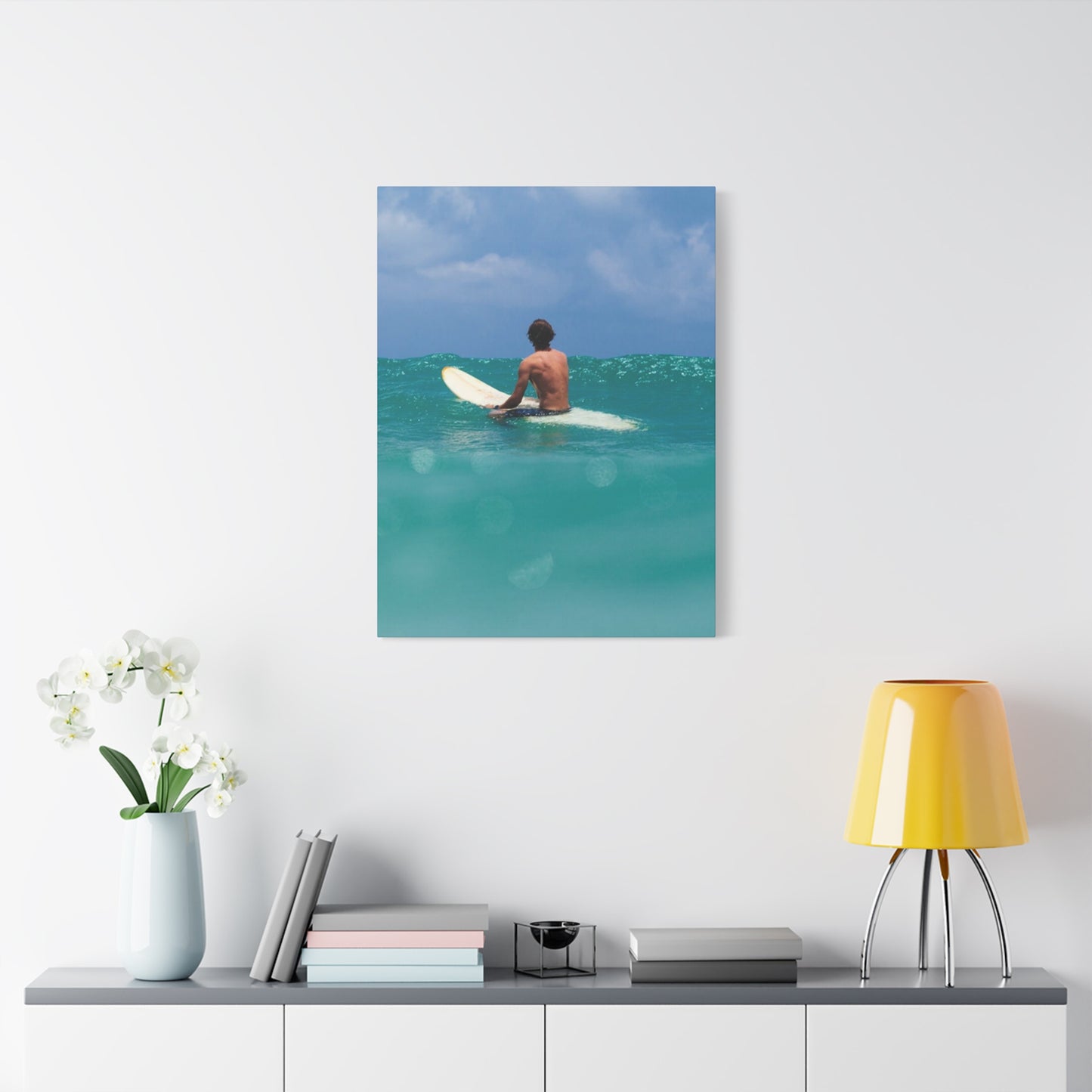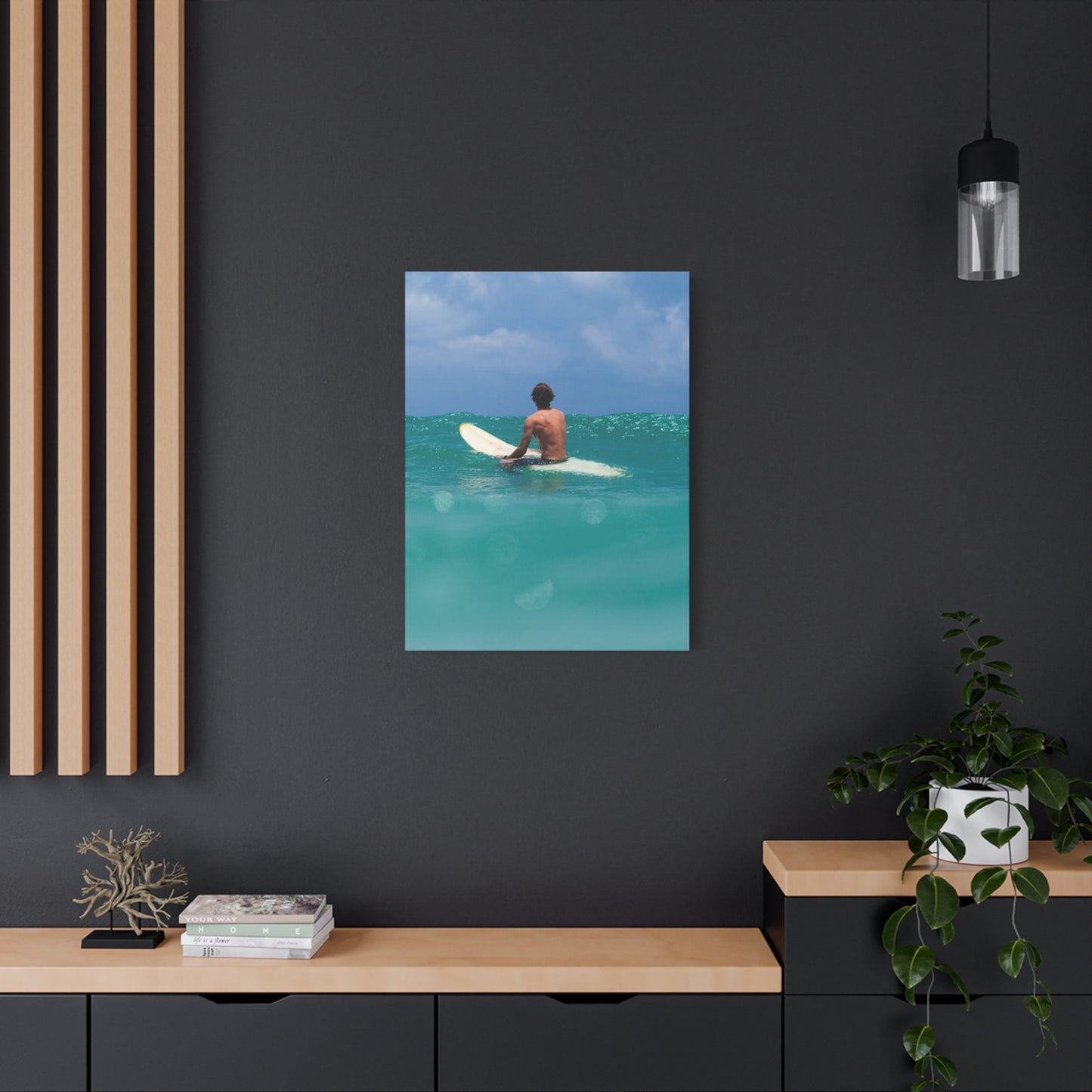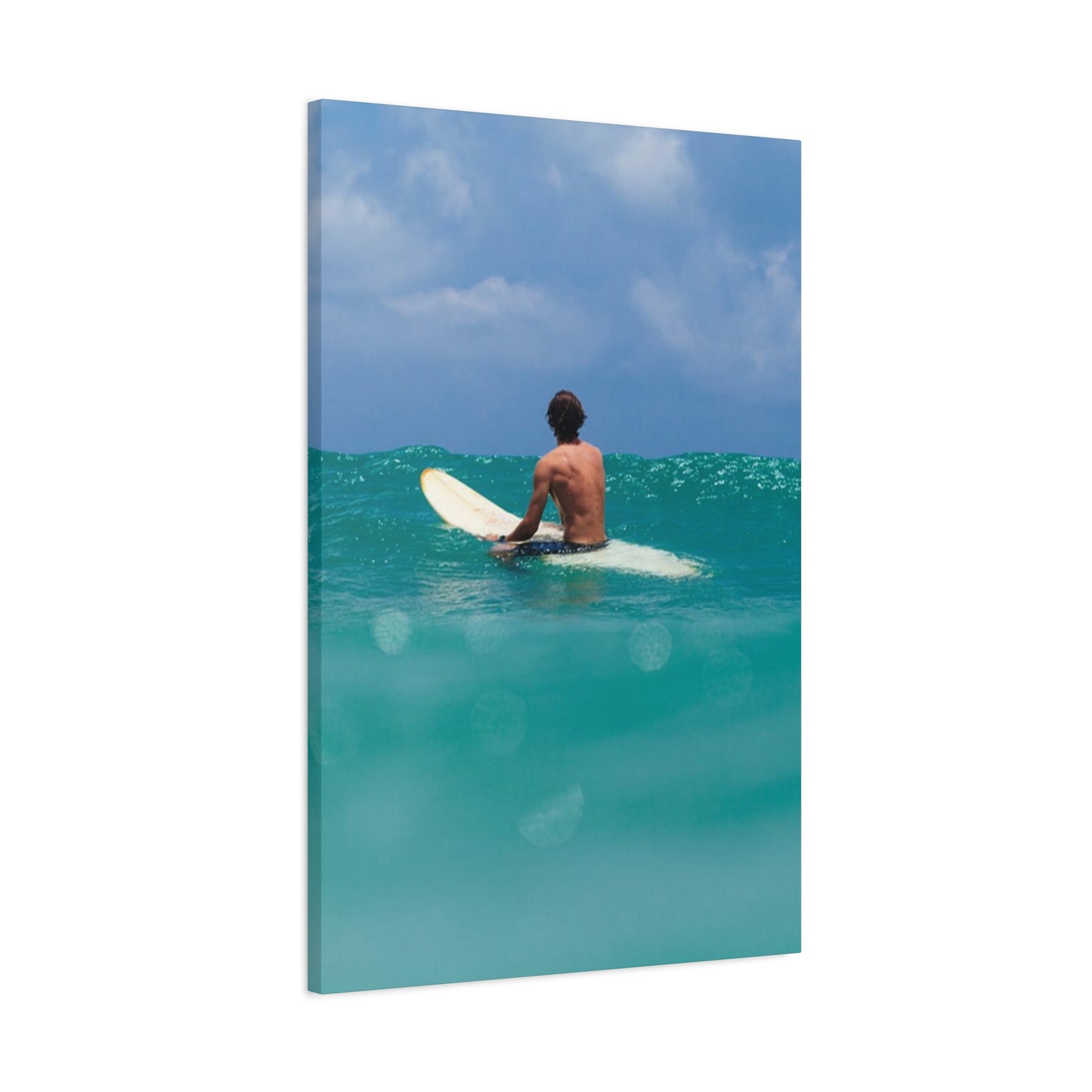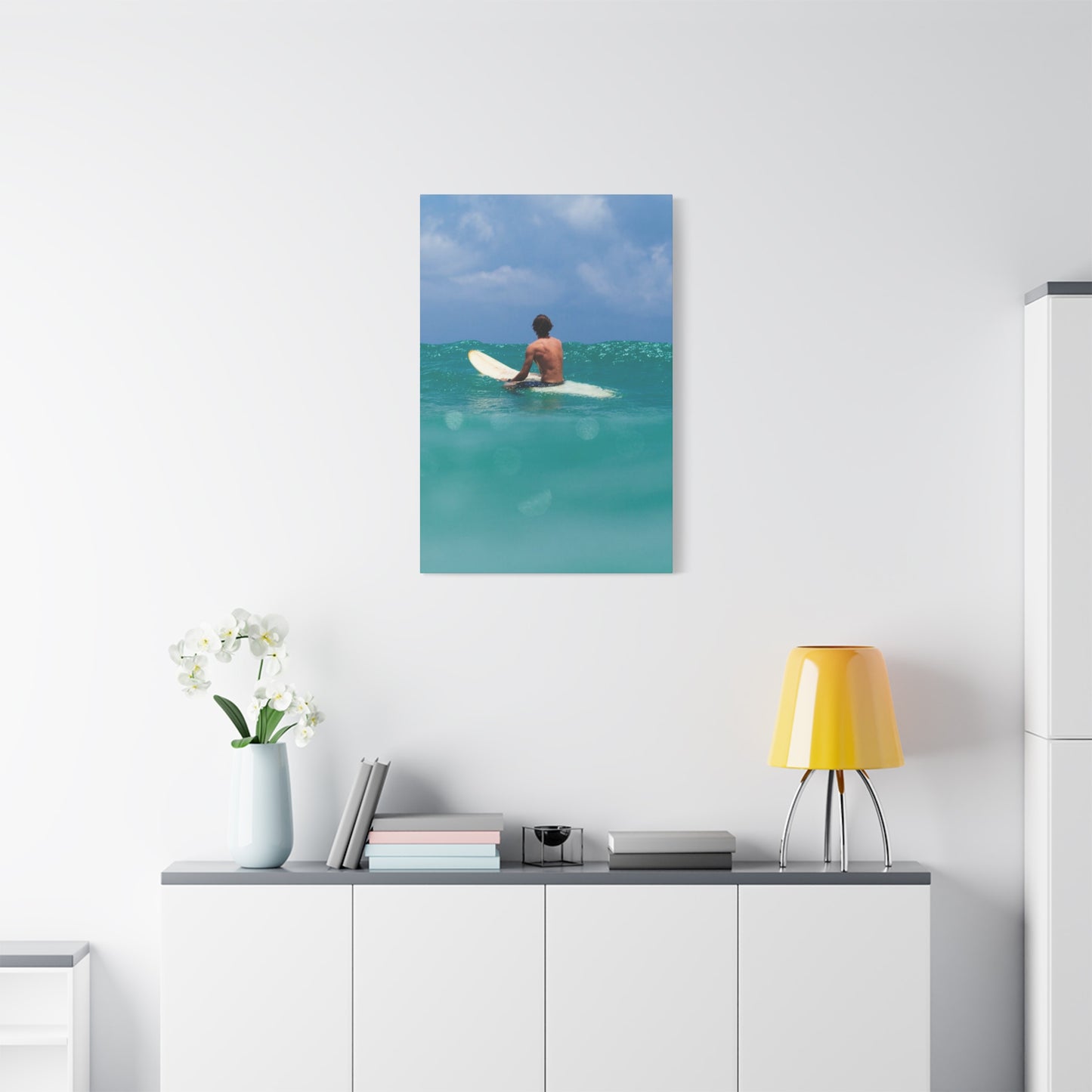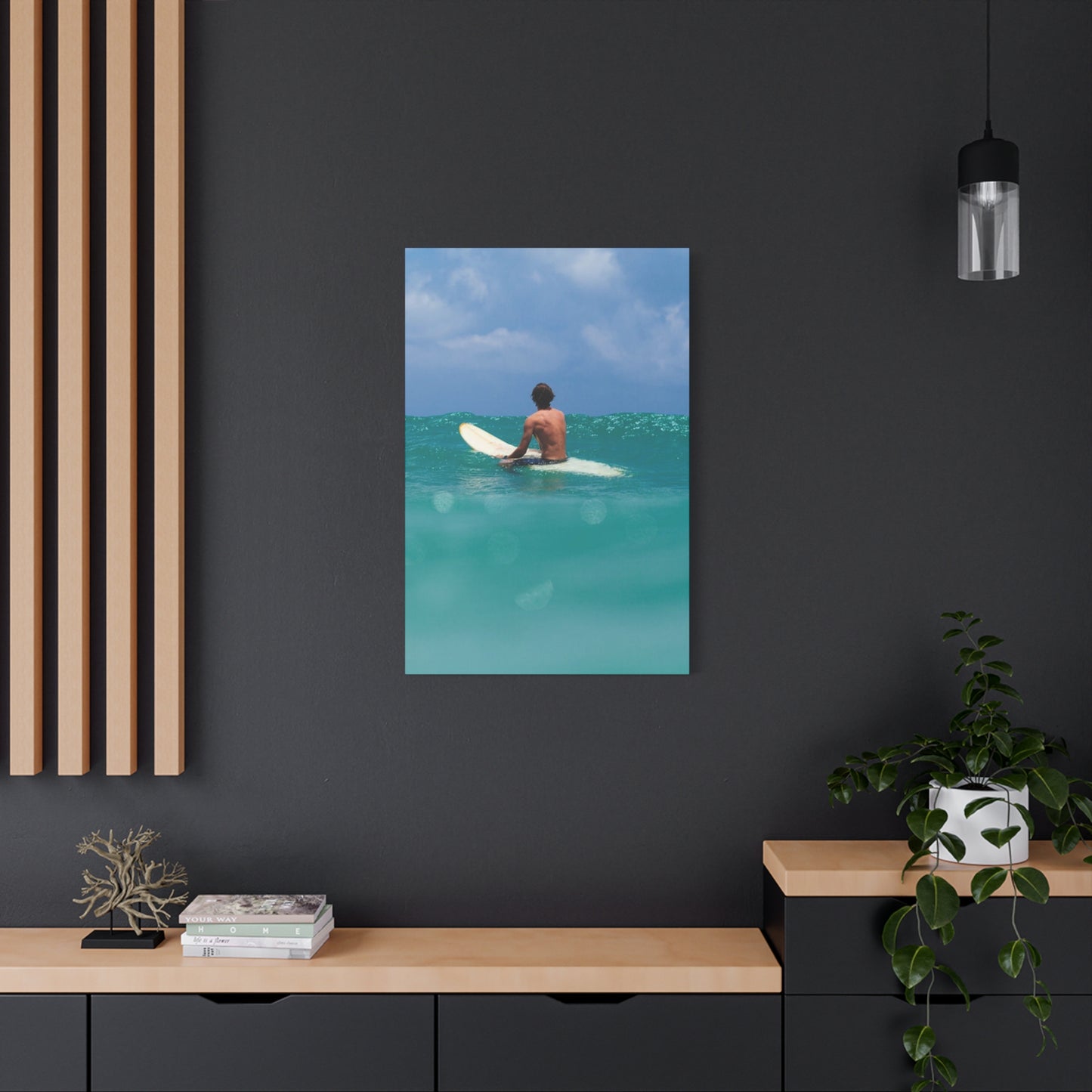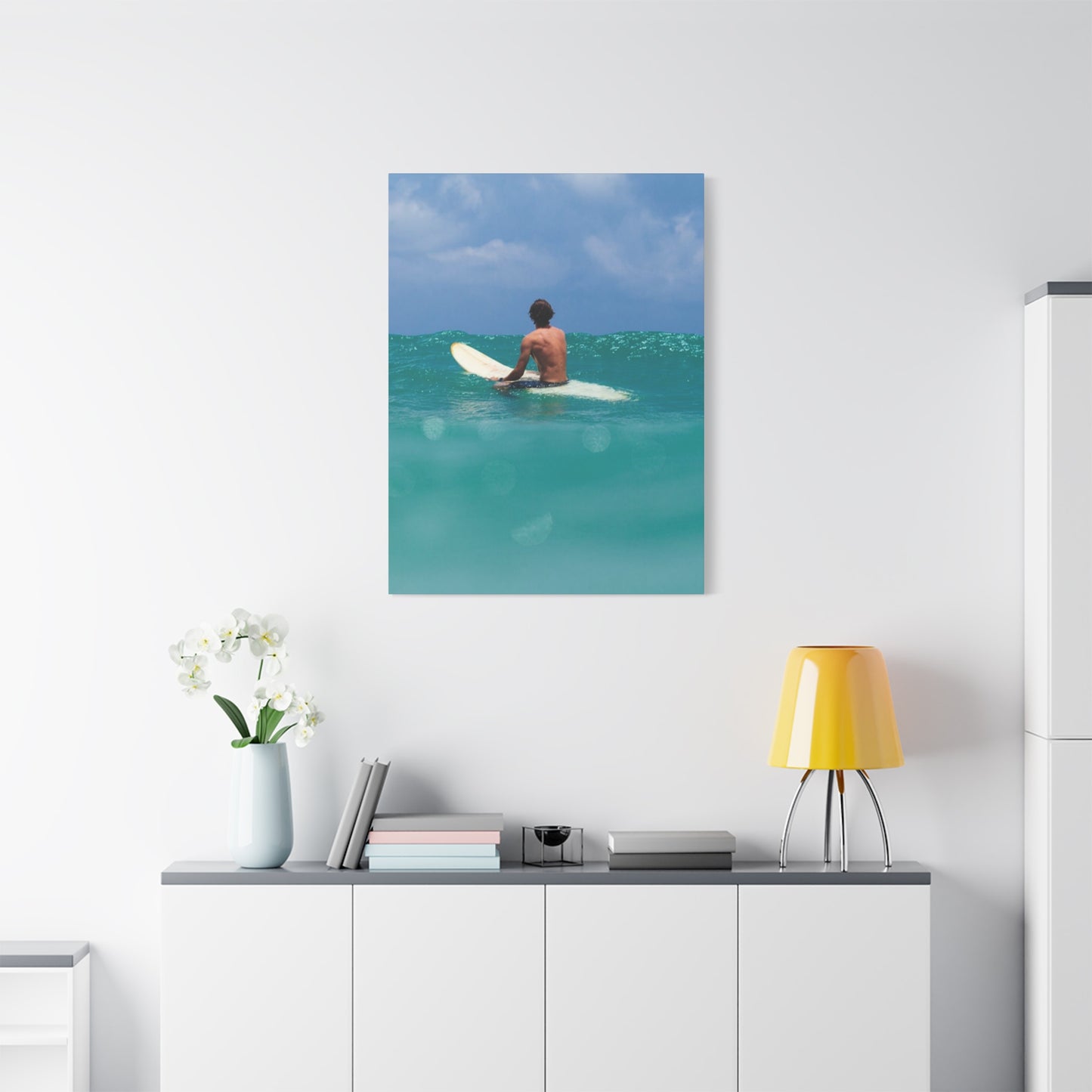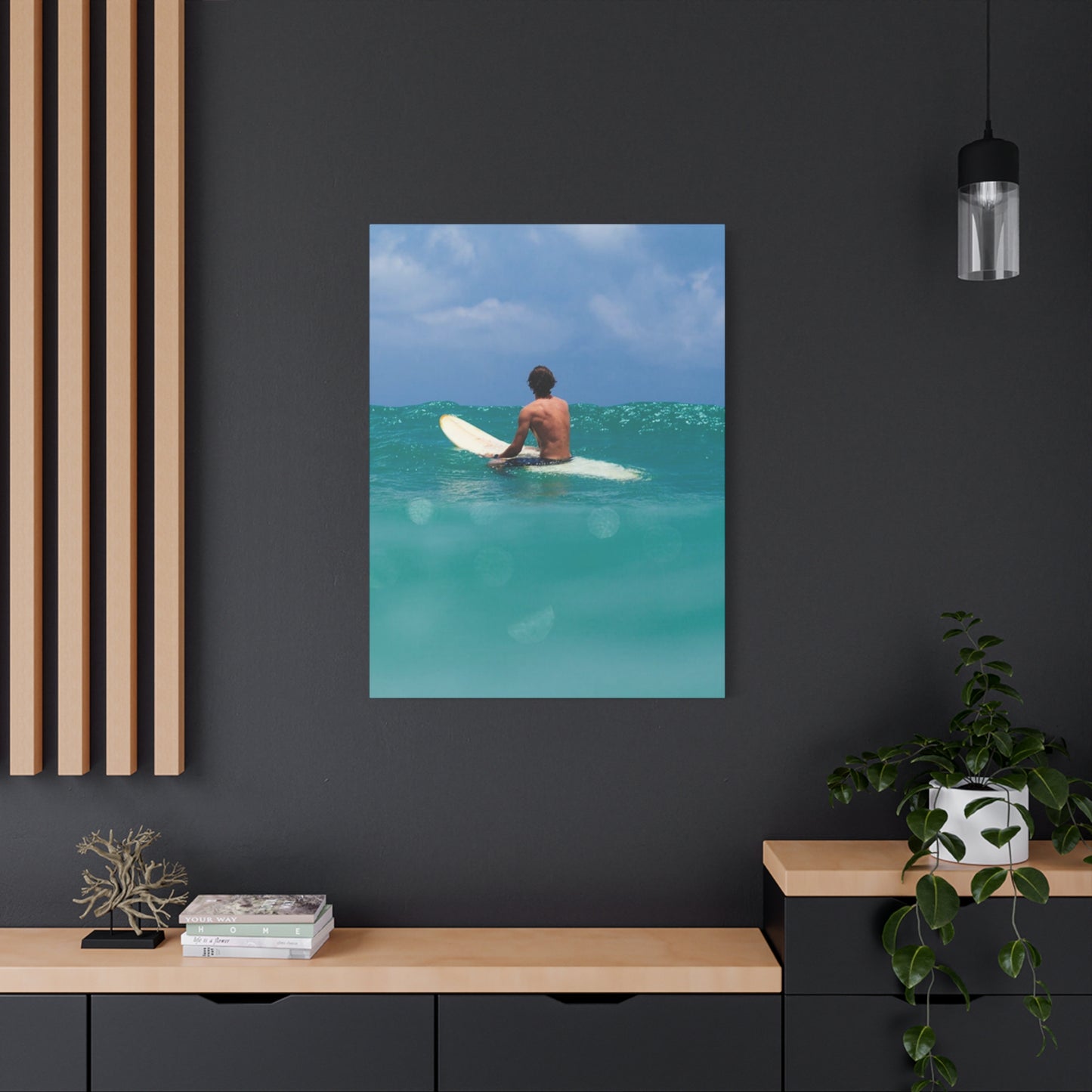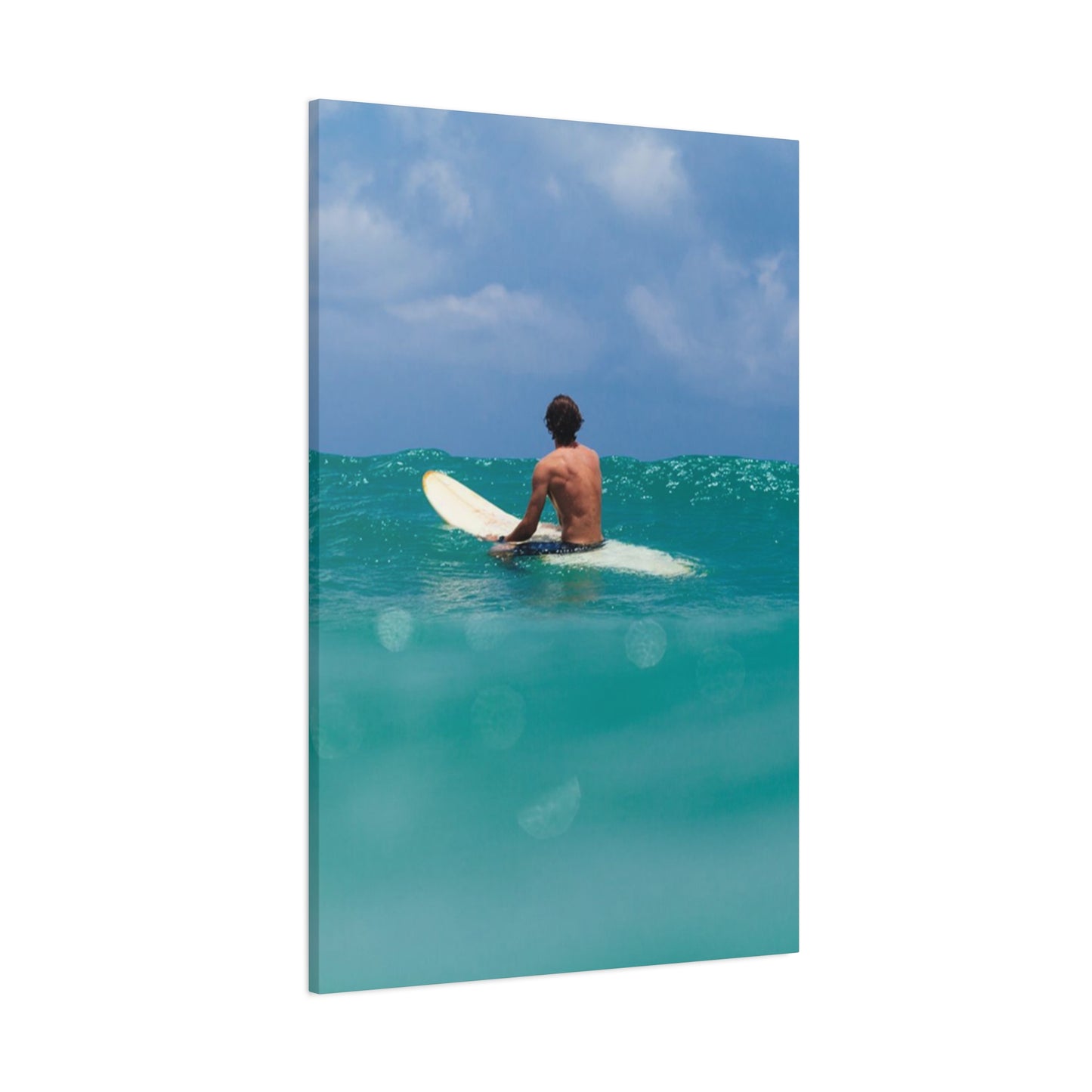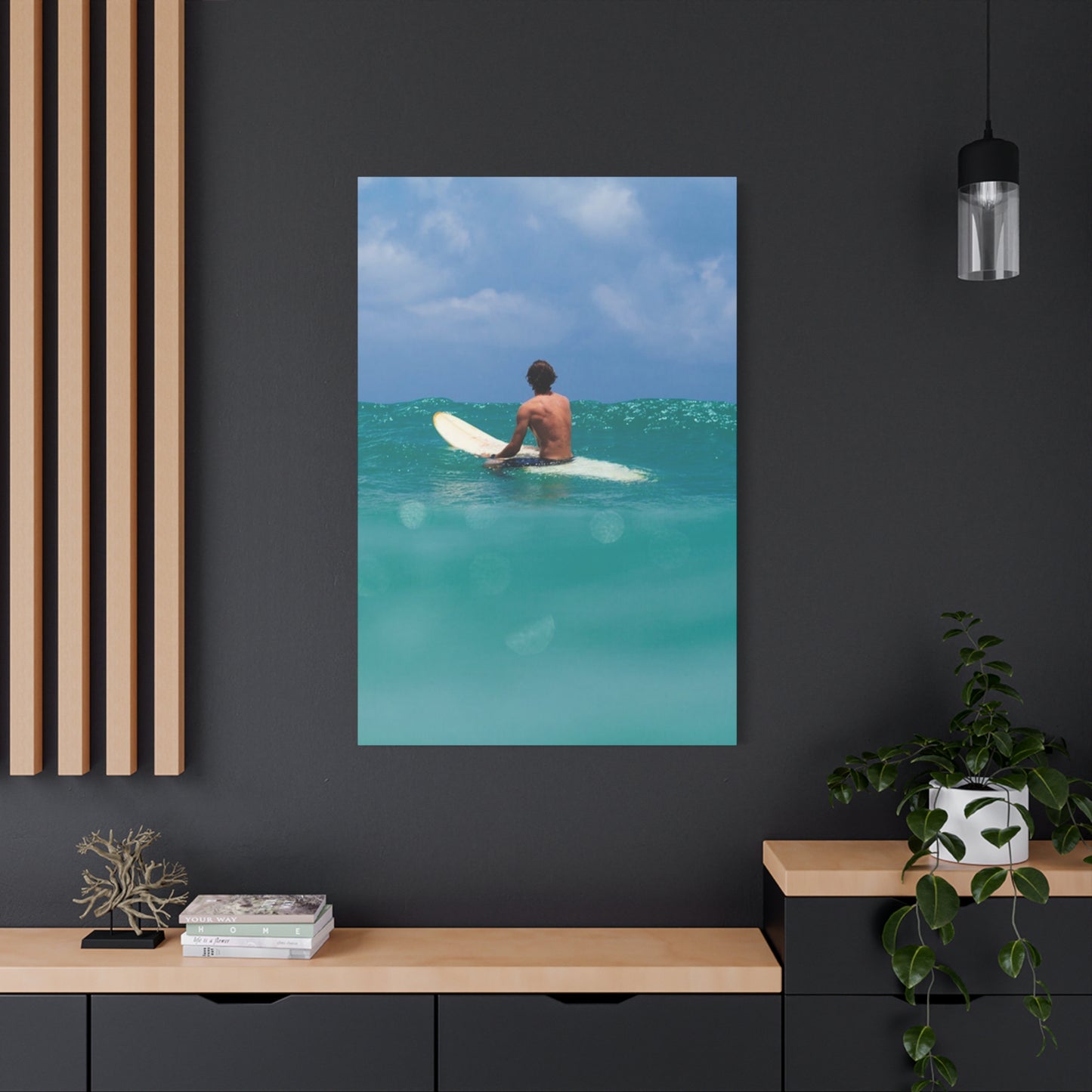Catch the Wave: Choosing the Right Surfing Photography Wall art to Match Your Home's Aesthetic
Surfing photography has emerged as one of the most captivating and sought-after forms of visual expression for interior spaces. This artistic medium bridges the gap between natural beauty and human achievement, offering homeowners an opportunity to infuse their environments with the raw energy and majestic splendor of ocean waves. When carefully selected and thoughtfully displayed, images of surfers carving through crystalline barrels or paddling against golden sunsets can completely revolutionize the atmosphere of any room, creating an immersive experience that transports viewers to distant shores.
The appeal of this photographic genre extends far beyond simple decoration. Each image tells a story of courage, freedom, and the eternal dance between humanity and nature's most powerful forces. Whether captured in vibrant color that highlights the turquoise depths of tropical waters or rendered in dramatic monochrome that emphasizes form and motion, these photographs possess an inherent ability to evoke emotion and spark imagination. They serve as daily reminders of adventure, possibility, and the untamed beauty that exists beyond our constructed walls.
For those seeking to create a distinctive aesthetic in their homes, this particular style of photography offers unparalleled versatility. It complements a wide range of interior design approaches, from minimalist contemporary settings to eclectic bohemian spaces. The dynamic composition inherent in action shots provides visual interest without overwhelming a room, while the organic subject matter introduces natural elements that soften architectural lines and create balance. Homeowners who integrate these images into their decor often discover that the pieces become conversation starters, focal points that draw the eye and anchor entire design schemes.
Beyond aesthetic considerations, there exists a deeper psychological benefit to surrounding oneself with imagery of the sea and its pursuits. Studies in environmental psychology suggest that exposure to natural scenes, particularly those involving water, can reduce stress levels and promote feelings of tranquility. The combination of this calming effect with the exhilarating energy captured in surfing photographs creates a unique duality that both soothes and energizes. This makes such artwork particularly valuable in modern homes, where creating spaces for both relaxation and inspiration has become increasingly important.
The technical mastery required to capture these moments adds another layer of appreciation. Photographers who specialize in this field must possess not only artistic vision but also intimate knowledge of ocean conditions, lighting, and timing. They often spend hours in the water, weathering the same elements as their subjects, waiting for that perfect convergence of light, wave, and movement. This dedication translates into images of exceptional quality and authenticity, imbued with the genuine spirit of the surfing lifestyle.
Revolutionizing Interior Aesthetics Through Ocean Action Photography
The transformative power of surfing imagery in residential spaces cannot be overstated. When strategically incorporated into home design, these photographs fundamentally alter the character and energy of interior environments. Unlike static landscapes or traditional seascapes, action photography introduces a kinetic quality that breathes life into walls. The frozen moment of a surfer suspended in a massive wave creates visual tension and excitement, drawing viewers into the frame and holding their attention in ways that passive imagery simply cannot achieve.
This transformation operates on multiple sensory and emotional levels simultaneously. On a purely visual plane, the organic curves of waves contrast beautifully with the rigid geometry of modern architecture, creating a harmonious balance between natural and constructed elements. The blues and greens prevalent in ocean photography provide cool tones that can counterbalance warm wood finishes or neutral color schemes, adding depth and dimension to overall room design. When sunlight streams through windows and illuminates these images, the effect can be almost magical, as light plays across the captured water, creating the illusion of movement and life.
The psychological impact proves equally significant. Rooms adorned with these photographs often feel more spacious and open, as the expansive ocean vistas depicted in the images create an illusion of extended space. This phenomenon, known as prospect-refuge theory in environmental psychology, suggests that humans are naturally drawn to spaces that offer views of open landscapes while maintaining a sense of enclosure and safety. Surfing photography delivers this experience within the comfort of indoor environments, satisfying deep-seated biological preferences for both openness and security.
Moreover, the presence of these images influences the emotional atmosphere of a space. Morning light hitting a photograph of dawn patrol surfers can energize occupants and set a positive tone for the day ahead. Evening views of sunset sessions can help transition from the demands of work to a more relaxed evening mindset. The flexibility of this medium allows homeowners to curate specific moods and responses through careful selection and placement of images throughout their living spaces.
The versatility of surfing photography also permits experimentation with scale and impact. A single large-scale print can serve as a dramatic statement piece, commanding attention and establishing the aesthetic direction of an entire room. Alternatively, gallery walls featuring multiple smaller prints can create narrative sequences, telling stories of wave progression, different surf breaks around the world, or the evolution of surfing styles. This scalability makes the art form accessible to spaces of all sizes, from compact urban apartments to sprawling coastal estates.
Ideal Imagery for Nautical-Themed Interior Environments
Creating authentic beach-inspired living spaces requires more than simply incorporating shells and driftwood. The most successful coastal interiors achieve their atmosphere through careful curation of elements that genuinely evoke the seaside experience. Surfing photography excels in this context because it captures the essence of beach culture with unmatched authenticity. These images convey not just the visual aspects of coastal environments but also the lifestyle, energy, and spirit that define oceanfront communities.
The connection between surfing imagery and beach-themed spaces operates on a level of cultural authenticity that few decorative elements can match. While generic seashell arrangements or nautical stripes might reference the coast, photographs of actual wave riding document real moments in real places, creating a sense of place and story that resonates more deeply with viewers. This authenticity proves particularly valuable for those who have personal connections to surfing or coastal living, as the images can trigger memories and emotions associated with their own experiences in the ocean.
Color palettes derived from surfing photography naturally align with beach-inspired design schemes. The range of blues found in ocean water, from pale aqua shallows to deep navy depths, provides a foundation for entire color stories. The whites of breaking foam mirror the neutral backgrounds favored in coastal interiors, while occasional pops of bright wetsuit colors or golden hour lighting add accent opportunities without departing from the overall theme. This inherent color harmony simplifies the design process, as the photography naturally coordinates with other beach-inspired elements.
The textures captured in these photographs also contribute to the coastal aesthetic. The smooth, glassy surface of perfectly groomed waves contrasts with the chaotic foam of breaking water, creating visual interest through texture variation. When printed on appropriate media, whether canvas, metal, or fine art paper, these textural qualities can be enhanced, adding tactile dimension to wall surfaces. This consideration becomes particularly important in minimalist beach houses where textural variation provides visual interest without cluttering the space.
Furthermore, surfing photography documents the actual locations that inspire beach-themed design. Images from iconic surf destinations like Pipeline in Hawaii, Jeffreys Bay in South Africa, or Uluwatu in Bali don't merely represent generic oceans; they capture specific places with unique characteristics and cultural significance. For homeowners who have visited these locations or dream of doing so, such photographs create tangible connections to meaningful places, transforming walls into windows that open onto cherished memories or aspirations.
The seasonal flexibility of this imagery also enhances its suitability for beach-inspired spaces. Summer scenes with bright sunlight and warm water evoke the peak vacation season, while winter swells with dramatic clouds and powerful waves capture the raw, untamed nature of the ocean during storm seasons. This variety allows homeowners to rotate images seasonally or to select pieces that represent their preferred aspect of coastal living, whether that's the playful warmth of summer or the dramatic intensity of winter surf.
Immortalizing the Rush of Wave Riding in Visual Form
The challenge of photographing surfing lies in capturing moments that last mere seconds, translating three-dimensional action and physical sensation into two-dimensional still images. Successful surfing photography freezes time at precisely the right instant, preserving the apex of human skill meeting natural power. These captured moments communicate the thrill, danger, and exhilaration of wave riding to viewers who may never set foot on a surfboard, creating an accessible window into an experience that remains foreign to most of the world's population.
The technical demands of this photographic specialty require equipment and expertise far beyond typical photography. Water housing systems protect cameras worth thousands of dollars while photographers swim in powerful surf zones, positioning themselves in the impact zone where waves break with tremendous force. The timing required to capture a surfer at the critical moment of a maneuver, with perfect focus and composition, demands years of experience and an intuitive understanding of wave dynamics. Split-second decisions determine whether a photograph captures glory or misses the moment entirely.
Composition in surfing photography follows specific conventions that have evolved over decades of practice. The rule of thirds often places the surfer in the lower portion of the frame, with the wave's face and crest occupying the upper regions, creating a sense of scale and drama. Negative space in the wave's face draws attention to the surfer while also emphasizing the size and power of the moving water. Leading lines formed by the wave's curve guide the viewer's eye naturally through the composition, creating visual flow that mirrors the physical movement being captured.
Lighting plays a crucial role in conveying the excitement and beauty of surfing. Backlit waves, with sunlight penetrating through the water, create luminous curtains of translucent green and blue that showcase the wave's power and beauty simultaneously. Golden hour photography bathes scenes in warm tones that add emotional warmth to the action, while overcast conditions can produce saturated colors and dramatic contrast. Photographers must work within the lighting conditions provided by nature, adapting their techniques to capture compelling images regardless of weather or time of day.
The element of danger inherent in surfing photography adds an additional layer of authenticity and impact to the resulting images. Viewers can sense the risk involved in both riding and photographing massive waves, creating visceral responses to the imagery. This danger translates into emotional engagement, as viewers recognize the courage required to place oneself in such powerful natural forces. The combination of beauty and peril creates a compelling tension that elevates surfing photography beyond simple action documentation into the realm of fine art.
Facial expressions and body language captured in these photographs convey the raw emotion of the surfing experience. The intense concentration visible in a surfer's face as they navigate a hollow barrel, or the triumphant joy of emerging from a successful ride, communicates universal human experiences of challenge, achievement, and joy. These emotional elements create connections between viewers and subjects, fostering empathy and admiration even among those with no personal surfing experience.
Introducing Marine Majesty into Residential Environments
The desire to incorporate oceanic elements into living spaces reflects a fundamental human connection to water and coastal environments. Surfing photography provides a sophisticated, dynamic method of achieving this goal without resorting to cliché nautical decorations. By selecting high-quality images that capture the essence of ocean experiences, homeowners can create genuine connections to marine environments within their interior spaces, effectively bringing the spirit of the coast into any location, regardless of actual proximity to the sea.
The psychological benefits of this approach extend beyond mere aesthetic pleasure. Environmental psychologists have documented the restorative effects of exposure to natural environments, with coastal and aquatic settings producing particularly strong positive responses. When direct access to these environments proves impractical due to geographic location or lifestyle constraints, high-quality photography can partially substitute for actual presence, providing visual and emotional access to the benefits associated with ocean environments. Regular exposure to these images can help maintain the sense of connection to nature that modern urban living often diminishes.
The selection process for surfing photography intended to bring the ocean indoors requires careful consideration of several factors. Image scale and perspective significantly affect the immersive quality of the final display. Large-format prints, particularly those measuring four feet or larger in width, create window-like portals that genuinely alter spatial perception. Viewers standing before these substantial pieces often report feeling transported to the depicted location, experiencing a momentary escape from their immediate surroundings. This transportive quality proves especially valuable in urban environments where natural spaces are scarce.
Placement within the home amplifies or diminishes the ocean-bringing effect. Living areas benefit from prominent display of surfing imagery, where frequent viewing and guest appreciation enhance the value of the pieces. Bedrooms can incorporate more intimate, serene surf scenes that promote relaxation and peaceful sleep, while home offices might feature more dynamic, energetic images that inspire creativity and motivation. The specific room function should inform image selection, ensuring that the mood conveyed by the photography aligns with the intended use of the space.
Lighting design plays a crucial supporting role in maximizing the impact of ocean photography. Picture lights, track lighting, or strategically placed accent lamps can highlight the images during evening hours, maintaining their presence and impact regardless of natural light availability. Dimmer controls allow for mood adjustment, enabling homeowners to emphasize or de-emphasize the artwork depending on the occasion or desired atmosphere. Some collectors even install lighting systems that slowly change color temperature throughout the day, mimicking natural light patterns and enhancing the realism of the displayed scenes.
The educational aspect of bringing the ocean home through photography should not be overlooked. Children growing up surrounded by images of ocean environments develop early awareness and appreciation for marine ecosystems. These images can spark curiosity about ocean science, environmental conservation, and global geography. Parents often report that surf photography in their homes initiates conversations about nature, athletics, travel, and environmental stewardship, creating teaching moments that extend the value of the artwork beyond decoration into family education and value formation.
Ultimate Coastal Energy for Interior Wall Surfaces
The concept of using surfing imagery to establish coastal atmosphere represents a sophisticated evolution in interior design thinking. Rather than relying on obvious beach paraphernalia, this approach employs authentic documentation of ocean activity to create atmosphere. The inherent energy in these photographs, frozen moments of human interaction with powerful natural forces, introduces a vitality that passive decorations cannot match. This dynamic quality becomes particularly valuable in spaces that risk feeling static or lifeless, as the implied motion and drama in surf photography inject constant visual interest.
The term "vibe" accurately describes the intangible quality that successful surfing photography brings to interior spaces. This vibe encompasses not just visual elements but also associations with lifestyle, values, and cultural identity. The surfing subculture historically emphasizes freedom, adventure, environmental awareness, and physical vitality. These associations transfer subconsciously to spaces decorated with surfing imagery, influencing how occupants and visitors perceive the space and its inhabitants. For those who identify with these values, surrounding themselves with relevant imagery reinforces their personal identity and creates environments that feel authentically reflective of their character.
The versatility of surfing photography allows it to adapt to various interpretations of coastal style. Traditional beach cottage aesthetics can incorporate vintage-style surf photographs with weathered finishes and classic compositions. Contemporary coastal minimalism pairs beautifully with clean, graphic surf images featuring bold compositions and limited color palettes. Tropical surf photography with lush greenery and warm waters suits island-inspired interiors, while cold-water surf images with rugged coastlines complement Pacific Northwest or Scandinavian design approaches. This adaptability ensures that surfing photography remains relevant across diverse aesthetic preferences.
Creating cohesive gallery walls exclusively featuring surf photography produces striking results. By maintaining thematic consistency while varying composition, perspective, and specific subject matter, these collections achieve unity without monotony. A well-designed surf photography gallery might progress from dawn patrol images through midday action shots to golden hour barrels and finally to twilight lineups, creating a narrative arc that mimics a day at the beach. Such thoughtful curation elevates the display from simple decoration to storytelling, engaging viewers on multiple levels simultaneously.
The emotional resonance of surfing photography contributes significantly to its effectiveness in establishing coastal atmosphere. Images of surfers completely enclosed in barrels, experiencing moments of transcendent beauty and danger, evoke powerful responses in viewers. The expression of pure joy on a surfer's face after a successful ride communicates contagious happiness. These emotional elements create spaces that feel alive and human, counteracting the cold sterility that can plague contemporary minimalist interiors. The human presence in the photographs provides scale, relatability, and emotional warmth that pure seascapes sometimes lack.
Seasonal rotation of surf photography can maintain freshness and interest in interior spaces. Summer months might feature bright, playful images of longboarders and sun-drenched waves, while winter could showcase the raw power of storm swells and cold-water surfing. This rotation keeps the decor feeling current and responsive to the natural rhythms of the year, preventing the stagnation that can occur when artwork remains unchanged for extended periods. Digital frame technology now enables easy rotation of digital surf photography, though many collectors still prefer the tangible quality of physical prints periodically swapped from personal archives.
Generating Vitality in Living Areas Through Wave Imagery
The ability of surfing photography to energize spaces stems from the kinetic nature of its subject matter. Unlike static subjects, frozen moments of wave riding capture movement, power, and physical exertion. The human brain processes these cues and responds with increased alertness and engagement, even when viewing still images. This neurological response makes surf photography particularly effective in spaces where energy and creativity are desired, such as home offices, creative studios, or fitness areas. The constant visual reminder of physical achievement and natural power can serve as motivation and inspiration throughout the day.
The color psychology inherent in ocean photography contributes to its energizing effects. Blues and greens, the dominant hues in surf imagery, have been extensively studied for their psychological impacts. While often associated with calm and tranquility, the specific shades and contexts in surfing photography tend toward more vibrant, saturated tones that stimulate rather than sedate. The bright aqua of tropical shallows, the deep sapphire of offshore swells, and the emerald green of backlit barrels all register as energizing, positive colors that enhance mood and alertness without the aggressive intensity of reds or oranges.
Strategic placement maximizes the energizing effect of surf photography. High-traffic areas like hallways, entryways, and staircases benefit from dynamic imagery that catches the eye during brief passages, creating moments of visual interest that break up routine movements through the home. Kitchen and dining areas can incorporate surf photography to create uplifting atmospheres that enhance social interaction and enjoyment of shared meals. Even bathrooms, particularly those with shower areas, become more engaging when adorned with images of water in its most dynamic forms, creating thematic consistency between the room's function and its decoration.
The scale of the imagery directly correlates with its energizing impact. Oversized prints, particularly those approaching or exceeding life-size scale, create immersive experiences that command attention and dominate spatial perception. A ten-foot-wide photograph of a massive wave with a clearly visible surfer challenges viewers to imagine themselves in that situation, creating adrenaline responses and heightened awareness. Conversely, smaller images can cluster in groupings that create cumulative energy through repetition and variation, building impact through quantity and diversity rather than overwhelming scale.
The choice between color and monochrome processing affects the energy profile of surf photography. Full-color images tend to feel more immediate, realistic, and vibrant, conveying the excitement and beauty of actual surf sessions. Black-and-white treatments, while sometimes perceived as calming, can actually intensify the dramatic aspects of surf photography by eliminating color distractions and emphasizing form, texture, and contrast. The resulting images often feel more timeless and artistic, but also more intense and graphic. Homeowners should consider their desired energy level when choosing between these approaches, understanding that both can effectively energize spaces in different ways.
The incorporation of multi-panel pieces or triptychs featuring sequential moments in a single wave or ride creates narrative energy that engages viewers differently than single images. Following a surfer's journey through multiple frames requires visual movement and sustained attention, actively engaging viewers rather than allowing passive observation. This sequential storytelling approach adds temporal dimension to the frozen moments, helping viewers understand the progression and development of the action, which in turn deepens appreciation and interest.
Styling Residential Rooms with Printed Surfing Imagery
The integration of surf photography into interior design requires thoughtful consideration of numerous factors beyond simple personal preference. Room architecture, existing color schemes, furniture styles, lighting conditions, and intended room function all influence how surfing prints should be selected, sized, framed, and positioned. Successful styling creates harmony between the photography and its environment while allowing the images to make meaningful contributions to the overall design narrative. This balance between integration and impact distinguishes professionally styled spaces from random artwork placement.
The first consideration involves assessing the room's existing design language. Modern minimalist spaces typically benefit from clean, graphic surf images with simple compositions and limited color palettes. The photography should complement rather than compete with the architectural minimalism, perhaps featuring a single surfer against a clean wave face, or abstract closeups of water texture. Conversely, eclectic or maximalist interiors can accommodate busier compositions with more complex color interactions, multiple subjects, or dramatic lighting effects. Understanding the room's fundamental aesthetic prevents visual discord and ensures the photography feels intentional rather than arbitrary.
Framing choices significantly impact how surf photography integrates into spaces. Traditional wood frames in natural finishes create warmth and connection to organic materials, supporting coastal and rustic aesthetics. Metal frames in black, white, or metallic finishes contribute contemporary sophistication and clean lines appropriate for modern interiors. Frameless mounting options, such as face-mounting to acrylic or metal printing directly on aluminum, offer ultra-contemporary presentation that emphasizes the photography itself while minimizing decorative elements. Canvas wrapping provides a casual, approachable feel suitable for relaxed, informal spaces. The frame becomes part of the overall composition, not merely a practical necessity.
Grouping strategies determine whether surf photography stands alone as a focal point or integrates into larger display configurations. Solo statement pieces work best when featuring dramatic, high-impact imagery that can carry visual weight independently. Gallery walls benefit from themed collections that maintain cohesion through shared elements like location, photographer, processing style, or color palette while varying specific subjects and compositions. Symmetrical arrangements suit traditional spaces and formal rooms, while asymmetric layouts feel more casual and contemporary. Determining the appropriate grouping strategy requires evaluating both the photography collection and the space it will inhabit.
Furniture arrangement must account for viewing angles and distances when positioning surf photography. Seating areas should offer clear sightlines to major pieces, with optimal viewing distances typically ranging from one-and-a-half to two times the width of the artwork. Dining areas benefit from photography positioned at seated eye level rather than standing height, ensuring diners can comfortably appreciate the images during meals. Bedroom photography should be visible from the bed but positioned to avoid dominating the view when trying to sleep. These practical considerations ensure that the photography receives appropriate attention without creating visual discomfort or awkward spatial relationships.
Lighting integration represents a critical but often overlooked aspect of styling with surf photography. Natural light should be managed to prevent glare while allowing the images to benefit from daylight's color-rendering properties. UV-filtering glass or acrylic protects prints from fading while maintaining clarity. Artificial lighting should be positioned to eliminate hot spots and reflections, with adjustable intensity allowing for different viewing conditions. The interplay between the lighting within the photographed scene and the lighting illuminating the print can create layered visual effects that enhance depth and realism, particularly when backlit wave images receive properly directed accent lighting.
Magnificent Oceanic Moments Preserved in Stunning Photographs
The artistry involved in capturing exceptional surfing photography extends far beyond technical camera operation. Elite practitioners combine athletic ability, ocean knowledge, artistic vision, and photographic skill to produce images that transcend simple documentation. These photographers often possess surfing experience themselves, understanding wave dynamics and rider decision-making from personal experience. This insider knowledge allows them to anticipate critical moments, position themselves optimally, and capture images that resonate with authenticity. The resulting photographs represent not just skilled photography but also deep cultural understanding and respect for the subject matter.
The pursuit of perfect surf photography often requires extraordinary dedication and personal risk. Photographers regularly swim in dangerous conditions, positioning themselves in impact zones where tons of water crash down with bone-breaking force. They work before dawn and after dusk to capture optimal lighting conditions, spending hours in cold water waiting for the right combination of swell, wind, and light. This commitment manifests in the photographs themselves, which carry the weight of effort and experience. Viewers who understand these circumstances often develop deeper appreciation for the images, recognizing them as hard-won achievements rather than casual snapshots.
The evolution of photographic technology has expanded the possibilities for surfing photography while raising the bar for excellence. High-speed shutters freeze individual water droplets in mid-flight, revealing details invisible to the naked eye. Underwater housings allow perspectives from within the wave itself, creating surreal views of surfers silhouetted against sunlit water surfaces. Drone photography provides bird's-eye perspectives that reveal wave patterns and surfer positioning in ways previously impossible. Despite these technological advances, artistic vision remains the defining factor separating exceptional imagery from merely competent documentation.
The decisive moment concept, articulated by legendary photographer Henri Cartier-Bresson, finds perfect application in surfing photography. Each wave offers only brief windows of opportunity when all elements align perfectly: surfer position, wave shape, light quality, and compositional balance. Elite surf photographers develop the ability to recognize and capture these fleeting moments, producing images that feel inevitable and perfect. The difference between a good surf photograph and a great one often comes down to a fraction of a second, making timing and intuition as important as technical skill.
The environmental conditions that produce excellent surf also create challenging photography circumstances. Salt spray, sand, powerful currents, and changing light demand constant adaptation and problem-solving. Equipment faces harsh conditions that can quickly damage sensitive electronics and optics. Photographers must simultaneously manage their safety, equipment protection, and compositional opportunities, maintaining creative focus while navigating physical challenges. This multitasking under pressure requires a special combination of skills and temperament, explaining why exceptional surf photography commands premium prices in fine art markets.
The emotional authenticity captured in the finest surfing photography stems from genuine moments of triumph, fear, concentration, and joy experienced by the subjects. Unlike posed studio photography, these expressions emerge naturally from real experiences, creating images that resonate with psychological truth. Viewers respond to this authenticity, recognizing and connecting with the genuine emotions displayed. This emotional honesty transforms the photographs from mere action documentation into human interest stories that engage viewers on deeper levels, creating lasting impressions and meaningful connections with the artwork.
Introducing Motion and Dynamism Through Surfing Wall Art
The human visual system evolved to detect and respond to movement as a survival mechanism, creating neurological pathways that prioritize motion perception. This biological heritage makes images depicting movement inherently more engaging than static subjects. Surfing photography exploits this predisposition by capturing moments of intense physical action, triggering viewer attention and interest automatically. The implied motion in frozen surfing moments activates the brain's motion-detection systems, creating a sense of dynamism even in perfectly still images. This neurological engagement makes surf photography uniquely effective at maintaining viewer interest over time.
The compositional techniques employed in surf photography inherently create visual movement that guides the viewer's eye through the image. The curve of a breaking wave forms a natural leading line that draws attention from entry point through the barrel and toward the surfer. Spray thrown from the wave's lip creates directional indicators that suggest motion and energy. The surfer's body position and board angle communicate velocity and trajectory, helping viewers understand the action's progression. These compositional elements work together to create images that feel alive and active, never static or lifeless, maintaining visual interest through implied motion and energy.
The contrast between the ordered chaos of breaking waves and the focused control of skilled surfers creates compelling visual tension. Viewers perceive both the raw power of the ocean and the human capability to navigate and utilize that power, generating admiration and excitement simultaneously. This tension between control and chaos, order and energy, manifests visually through the juxtaposition of the surfer's streamlined form against the exploding water surrounding them. The resulting images communicate both danger and mastery, vulnerability and capability, creating complex emotional responses that simple static imagery cannot achieve.
The three-dimensional quality of water movement, partially flattened in two-dimensional photographs, still conveys depth and volume through texture and lighting cues. The translucent quality of sunlit waves creates layers of visual depth, with darker water in the foreground, luminous green or blue in the wave face, and sky visible through the thinnest sections. Foam patterns on the water surface create textural variation that suggests surface contours and movement patterns. These depth cues work subconsciously to create rich, layered compositions that reward extended viewing, as observers continue discovering new details and relationships within the frame.
The timing of action photography creates impossible perspectives that defy normal human experience. A photographer positioned inside a barrel captures views that surfers themselves rarely see clearly, as they're focused on navigation rather than observation. Aerial perspectives from drones reveal patterns and relationships invisible from water level. Extreme closeups isolate moments so brief that they pass unnoticed during actual surfing. These unusual perspectives create sense of discovery and novelty, showing viewers aspects of surfing they've never encountered, maintaining interest through revelation and education as much as through aesthetic appeal.
The seasonal and temporal diversity available within surfing photography collections allows for varied expressions of action and movement. Summer waves with playful, moderate sizes convey casual energy and fun, suitable for spaces needing gentle stimulation without intensity. Winter storm swells with massive waves and dramatic conditions communicate raw power and serious athleticism, appropriate for spaces requiring more aggressive energy and impact. Dawn sessions with glassy conditions and soft light offer tranquil movement, while midday action with choppy conditions and bright sun provides vigorous visual energy. This range enables precise calibration of the movement and action level to suit specific spatial requirements.
From Seascape to Interior Space: Implementing Wave Photography Concepts
The translation of ocean experiences into residential environments represents a design challenge that surfing photography addresses with unique effectiveness. The vastness of the ocean, the power of waves, and the freedom of riding them are inherently experiential qualities that don't easily transfer to static visual media. However, through careful photography selection and thoughtful integration into interior design schemes, these qualities can manifest meaningfully in home environments. The key lies in understanding that the photography serves as a portal or window rather than merely decoration, creating visual and emotional connections to distant locations and experiences.
The implementation process begins with identifying the specific aspects of ocean experience that resonate most deeply with the homeowner. Some individuals respond primarily to the aesthetic beauty of waves and water, seeking images that emphasize color, form, and natural artistry. Others connect more strongly with the athletic achievement and skill displayed in surfing, preferring images that clearly show the surfer's expertise and the challenge being overcome. Still others focus on the lifestyle and cultural elements, choosing images that capture the community, tradition, and values associated with surf culture. Clarifying these priorities ensures that selected photography delivers the desired emotional and aesthetic impact.
Geographic authenticity can significantly enhance the effectiveness of surf photography in creating oceanic connections within homes. Images from locations with personal significance, whether past vacation destinations, ancestral homelands, or aspirational travel goals, carry additional layers of meaning beyond their aesthetic qualities. A photograph of Waikiki's gentle waves might evoke memories of family vacations and Hawaiian heritage. An image of Indonesia's perfect barrels could represent adventure dreams and future travel aspirations. This personal relevance transforms the photography from generic decoration into meaningful talismans that anchor personal narratives within the home environment.
The curation of multi-image displays can tell broader stories about ocean experiences and surf culture. A gallery wall might progress geographically, featuring waves from different regions to create a virtual world tour of surf destinations. Alternatively, it might focus on a single location across different conditions and seasons, showing the variety and change inherent in ocean environments. Biographical collections following a single surfer through different stages of their career or life communicate personal growth and dedication. These narrative approaches create depth and meaning that exceed the sum of individual images, engaging viewers cognitively as well as aesthetically.
The integration of supporting design elements enhances the ocean-to-interior translation. Natural materials like driftwood, stone, and organic fibers echo the textures present in surf photography and coastal environments. Color palettes drawn from the images create cohesion between the artwork and its surroundings, making the photography feel integral rather than incidental to the design. Plants, particularly those associated with coastal climates like palms, ferns, and succulents, provide living elements that complement the natural themes in the photography. These supporting elements create layered, immersive environments where the surf photography serves as the focal point within a broader coastal narrative.
The temporal aspect of ocean imagery provides opportunities for creating spaces that feel connected to natural rhythms and cycles. Images depicting different times of day can be positioned throughout the home to mirror the progression of natural light, with dawn scenes in eastern-facing rooms, midday action in central spaces, and sunset sessions in western areas. Seasonal rotation of imagery maintains freshness and connection to current conditions, with summer photos displayed during warm months and winter swells featured during storm season. This temporal awareness creates dynamic, responsive environments that avoid the static, frozen-in-time quality that can plague spaces with unchanging decoration.
Perfect Addition to Contemporary Coastal Residential Architecture
Modern beach house design has evolved considerably from the nautical clichés that once dominated coastal architecture. Contemporary approaches emphasize clean lines, natural materials, indoor-outdoor connectivity, and sophisticated color palettes that reference without literally reproducing traditional beach house aesthetics. Surfing photography aligns perfectly with this evolved design language, offering authenticity and visual interest without resorting to kitsch. The dynamic nature of the imagery complements the open, flowing spaces typical of modern coastal homes, while the subject matter provides obvious thematic relevance to the location and lifestyle.
The architectural features common in modern beach houses create ideal conditions for displaying surf photography. Large windows and abundant natural light showcase the photographs beautifully while creating connections between the indoor art and outdoor ocean views. Open floor plans with minimal wall interruptions allow for dramatic, large-scale prints that can be appreciated from multiple vantage points throughout the living space. High ceilings accommodate vertically oriented images that emphasize the height and power of waves. The neutral color schemes and natural material palettes typical in contemporary coastal design provide perfect backdrops that allow the photography to command attention without visual competition.
The lifestyle associated with modern beach house living naturally aligns with surfing culture. Both emphasize wellness, outdoor activity, environmental awareness, and community connection. Homeowners who invest in contemporary coastal properties typically appreciate active lifestyles and authentic experiences over status symbols and formal traditionalism. Surfing photography reflects these values, documenting real athletes engaging authentically with nature rather than staged or artificial scenarios. This cultural alignment creates coherence between the home's architecture, its inhabitants' values, and its interior decoration, producing spaces that feel genuinely reflective of their occupants rather than generically aspirational.
The technical quality demanded by contemporary design standards requires photographic excellence in resolution, color accuracy, and print quality. Modern beach house owners typically expect premium materials and impeccable execution in all design elements, and artwork must meet these elevated standards. Professional surf photographers working with high-end equipment produce files capable of enormous enlargement without quality loss, satisfying the demand for large-scale prints. Archival printing processes using fade-resistant inks and acid-free papers ensure longevity appropriate for significant investment pieces. These quality considerations align with the overall premium nature of contemporary coastal architecture.
The environmental consciousness common in modern coastal communities extends to artwork selection. Many contemporary beach house owners prefer to support photographers who demonstrate environmental responsibility and contribute to ocean conservation efforts. Documentary-style surf photography that captures the beauty and fragility of ocean environments can raise awareness about environmental issues while serving decorative functions. Limited edition prints with portions of proceeds supporting conservation organizations appeal to buyers who want their purchases to reflect their values. This ethical dimension adds another layer of appropriateness for surf photography in contemporary coastal homes.
The investment value of quality surf photography adds financial justification to its aesthetic appeal. Works by recognized surf photographers appreciate over time, particularly limited edition prints from significant moments or locations. Unlike mass-produced decorative items that hold no resale value, collectible surf photography represents both immediate enjoyment and potential future appreciation. For homeowners viewing their beach houses as financial investments as well as lifestyle choices, this dual value proposition makes surf photography an intelligent selection that serves multiple purposes simultaneously.
Conclusion
Choosing the right surfing photography wall art is not just about finding a beautiful image; it’s about selecting a piece that resonates with your personal style and enhances the aesthetic of your home. With its ability to bring dynamic energy, natural beauty, and a sense of adventure to any space, surfing photography can serve as both a stunning visual centerpiece and a source of inspiration.
The key to finding the perfect piece lies in understanding your home’s existing aesthetic and how surfing imagery can complement it. If your home has a modern or minimalist style, for instance, opt for a clean, high-contrast black-and-white surfing photo that offers timeless sophistication. These striking images, often showcasing a surfer in mid-action against a backdrop of crashing waves, can create a bold statement without overwhelming the room. Conversely, if your space is more eclectic or coastal-inspired, you might want to explore vibrant, full-color images that capture the energy of the surf. Bright sunsets, lively beaches, and surfers carving through massive waves add a burst of color and warmth to your space, making it feel more open and inviting.
For those with a more rustic or beachy style, a surfing photo with a vintage or retro vibe could be the perfect fit. These images, often tinged with warm, nostalgic tones, can evoke memories of sun-soaked beach days and the carefree nature of coastal life. Whether framed in a distressed wood frame or hung in a driftwood-style frame, these photos can add depth and character to rooms that reflect the relaxed lifestyle of the coast.
When selecting surfing photography, it’s also important to think about the mood you want to create in the room. A serene photo of a solitary surfer gliding through glassy water can invoke a feeling of peace and tranquility—ideal for a bedroom or meditation space. On the other hand, an action-packed shot of a surfer riding a towering wave may inject a sense of excitement and energy, making it perfect for a living room or home office.
The placement of your surfing art also plays a critical role in how it interacts with your home’s aesthetic. A well-placed piece above a sofa or on a feature wall can draw the eye and serve as a conversation starter. By thoughtfully pairing the right artwork with complementary decor elements, like soft blues, sandy tones, or even natural wood finishes, you can create a cohesive look that feels both curated and inspired.
In conclusion, choosing the right surfing photography wall art is about more than just selecting a beautiful picture. It’s about finding an image that enhances your home’s aesthetic while reflecting your love for the ocean and the adventurous spirit of surfing. With the right piece, you can turn any space into a vibrant, inspiring environment that brings the freedom of the surf into your daily life.

















